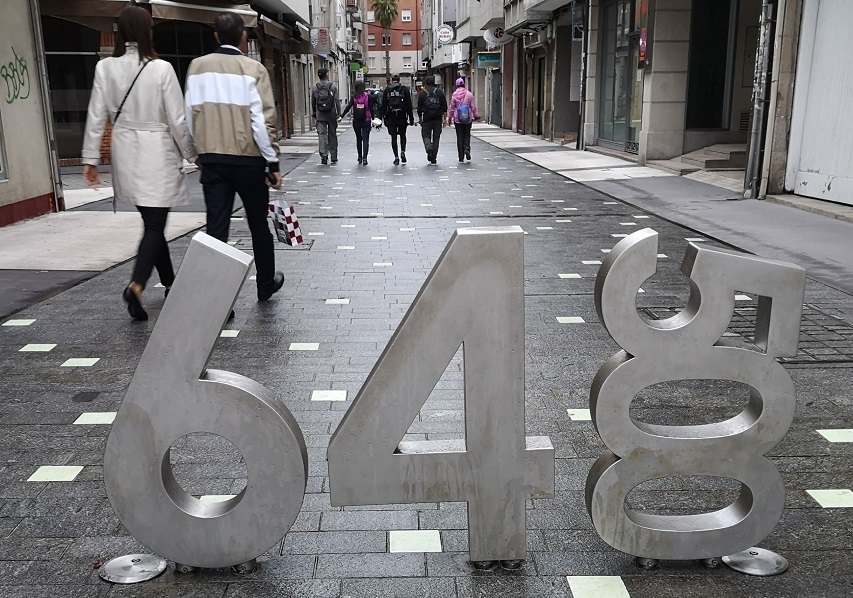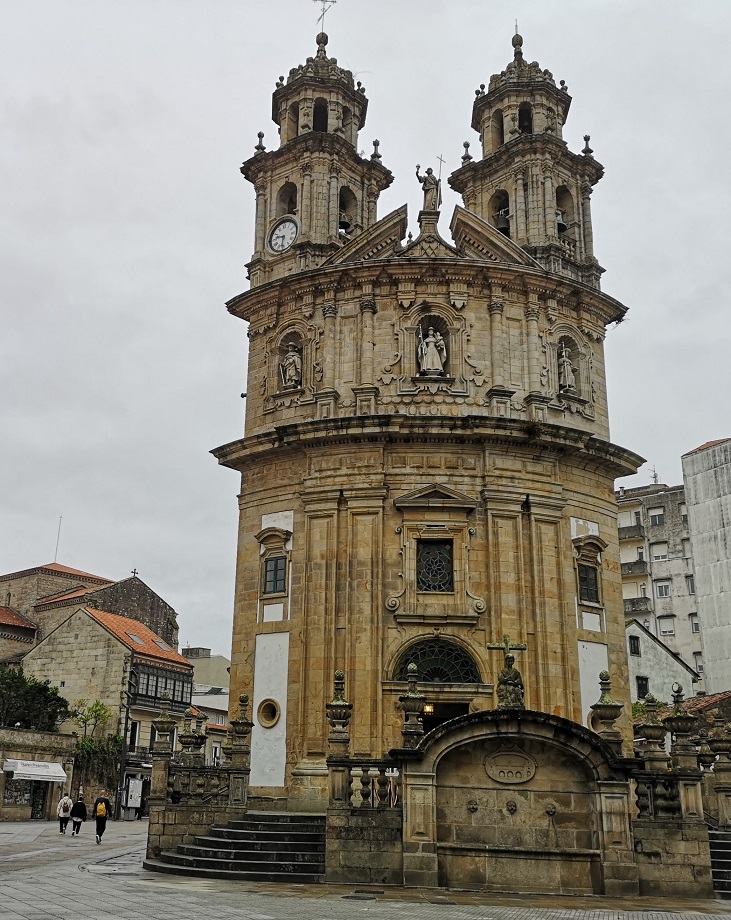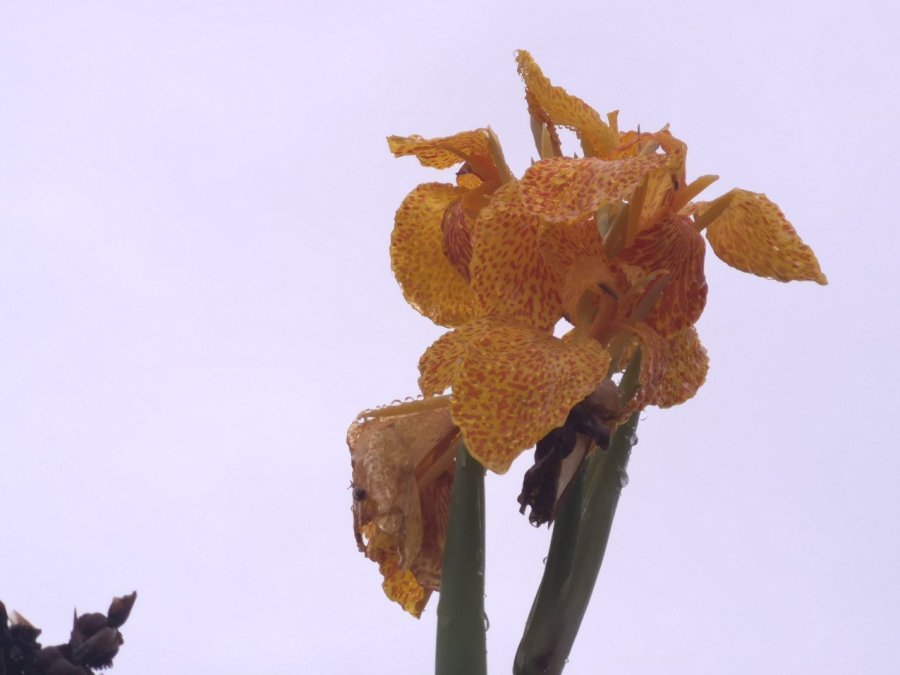Camino Portuguese da Costa – Days 11 and 12, September 29th – 30th 2019

Pontevedra to San Mamede de Portela
I left the Casa A Grade air bnb (see my previous day’s walk for details) in the almost-dawn, and continued along the Rio Tomaza into Pontevedra, a 40 minute walk.




The Top Ten Things to Do and See in Pontevedra website (not mine)
Leaving the city, I once again rejoined the Via Romana / Portuguese Camino


Being a Sunday, the cyclists were out. When you are walking quietly, focusing on the way your feet meet the ground, allowing thoughts to meander in and out, and then a cyclist shoots past your left elbow with a whoosh and, very occassionally, a Buen Camino, it is a shock. When it happens over and over again, it’s more akin to a small trauma and there is no possibility of resting in your rhythm and pace, you must stay alert.


Shortly afterwards, it poured and it was not possible to take photos. Arriving at the hostel of San Marmede de Portela in the middle of the countryside, there was no-one to greet me, just a couple already drying off. Thank goodness the door was open! I was soaking, wet through. It was a large dormitory and I chose a corner away from the door, not knowing that there was no heating and that by the end of the day the room would be completely full to overflowing (there were pilgrims sleeping in the eating room etc). It was also very dark and although some of us tried to open windows, they were always immediately closed by others.
Wet walking clothes are stinky, especially when there is no drying room or anywhere to hang clothes / store boots except narrow corridors. If you sleep on the bottom bunk and they are like drapes all around you, there is no getting away from the smell. People were using one hair drier between 20 or more, but it takes a long time to dry sodden socks with one. There is a big garden and other buildings outside, but the weather was too terrible to contemplate unless you arrived very late in which case I did see folk sloshing across, seemingly with no other opton, but I didn’t know where they were going.

Run by volunteers, this is a donativo hostel and the men who came along later knew what they were doing and were well prepared. Being well away from shops or restaurants, a great meal was produced and tables and chairs arranged and rearranged to fit everyone in. Sitting alongside all nationalities, it was a jolly occassion (there was nowhere to get away from it if you had wanted privacy). There was wine and hot soup, vegetarian tortillas with salad and, if I remember rightly, a desert too. Clearing up was a communal event and the partying went on, as ever, late into the evening.

San Marmede de Portela to Caldas de Reis
The next day it was still raining, but luckily it cleared. Ugh, putting on wet boots and clothes is one of the worst things after a broken night!
I walked through Santa Maria de Alba, A Cancela and Albergue de Briallos.
There was a most unusual cafe where many of us stopped for a hot drink that morning (some were taking shots of orujo (a sort of grappa) with their coffee, perhaps a way of warming up from the inside). There was only one, older and innovative man serving us all. It looked as if he had used his garage for this purpose and, after serving us, I noticed that he disappeared through a side door. On further investigation, I spied huge vats of grapes steeping.



I am always coming across dead animals on the camino, but today’s fox was still alive. I crouched down and whispered to it, knowing that it would not live long, wishing it well on its journey.



My In Praise of the Donkey blog




I stayed in the private Albergue Peregrinos Posada Doña Urraca and I do not recommend it, despite the fantastic location. It was dirty and crowded, the rooms are almost at the front door so anyone can walk in and out. The photos on the website do not show it as it is – do not be deceived. It is not a municipal one – I have never seen a government-run hostel be filthy like this.

There was some lively conversation around the table, however, from the US as well as Germany, and a crowd of Polish pilgrims (I have not met people from Poland much at all on the Camino) at the hostel.

It’s a busy and normal town despite all of us traipsing through, with friendly local people and lots of facilities – a big supermarket, cafes and loads of banks. I tried the three cashpoints in one street – one was charging 3.50 euros, one 1.50 and the third nil, so watch out for this when getting cash out. It wasn’t my bank which charged me, nothing to do with getting money from a British finance organisation, it was the cashpoint machine company and I found this all over Portugal and in some parts of Spain. (I use a Post Office Travel Money Card via an app on my phone which charges for the exchange, but doesn’t have an additional service charge like the Bank of Scotland does if I use my everyday debit card when I am abroad).

Have you walked the Portuguese Camino? Maybe you are planning to? Leave me a comment to let me know 🙂
